Category Archive: Distracted Driving
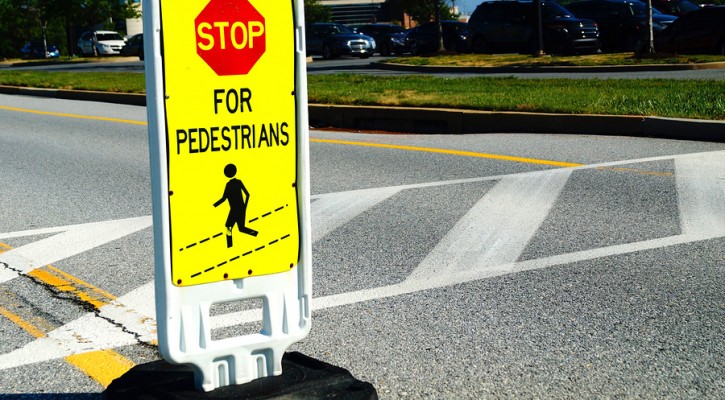
Pedestrian Deaths On The Rise
March 29, 2016
Pedestrian deaths are on the rise according to a new study conducted by the Governors Highway Safety Association (GHSA) and predicts that 2015 pedestrian deaths will increase by ten percent over the previous year.
Data collection by safety organizations takes time and final fatality reports are normally 18 to 24 months behind. To conduct this study, the GHSA asked states for their preliminary data for the first six months of 2015 and compared those numbers to the first six months of 2014. According to the numbers, pedestrian deaths increased in 26 states and the District of Columbia. The rates were unchanged in three states and were down in 21 states.
The data shows that four states; California, Florida, Texas and New York, account for 42 percent of pedestrian deaths even though those states only make up 33 percent of the US population. Florida had the highest rate of pedestrian deaths but surprisingly, the number of pedestrian deaths in Florida declined by four percent over the previous year. Vermont had the lowest rate with zero pedestrian deaths.
While drivers necessarily deserve a lot of blame for pedestrian deaths, the pedestrians themselves must also share in the blame. Distractions for both drivers and pedestrians are on the increase with everyone feeling the need to stay connected online via texting or social media. The issue of texting while walking has become such a problem that the state of New Jersey and some US cities are considering laws to ban texting while walking. In England, a 20 foot statue spanning a walkway at the Salisbury Cathedral in Wiltshire had to be moved because pedestrians, with their eyes downcast looking at smartphones, kept bumping into it even though there was plenty of clearance to pass underneath.
A major problem for both drivers and pedestrians continues to be alcohol which was involved in approximately half of the pedestrian deaths. About 34 percent of pedestrians killed in crashes had a BAC of .08 or higher. Fifteen percent of drivers had a BAC of .08 or higher.
The time of day and place also played a part with 72 percent of pedestrian deaths happening during the hours of darkness. Most pedestrian deaths (74%) occur away from intersections.
According the the GHSA report, pedestrian deaths have been increasing steadily over the past ten years. (Click on the image to enlarge.)
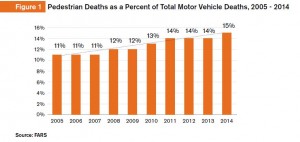
For more information, read: Pedestrian Traffic Fatalities By State – 2015
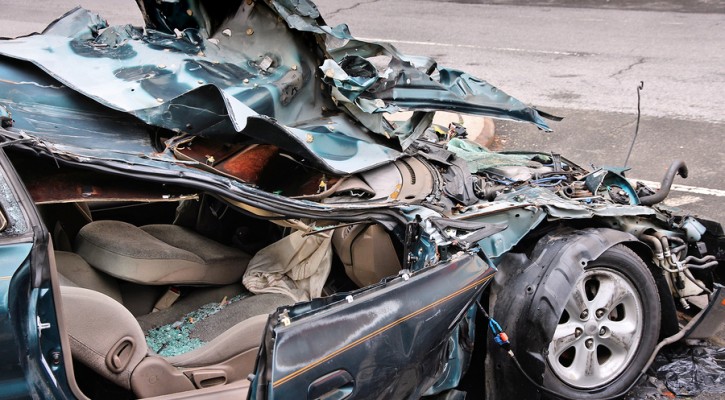
Florida Highway Death Rate On The Rise
January 6, 2016
After years of steady decline, the highway death rate in Florida is now rising at a steady and dramatic rate. The figures, supplied by the Florida Department of Highway Safety and Motor Vehicles, show a disturbing trend.
Florida’s highway death rate in 2015 increased by 8.3 percent compared to the number of deaths in 2014. Traffic injuries between 2014 and 2015 increased by 5.4 percent. The only figures that have gone down in Florida are the pedestrian death rates by 8.2 percent and bicycle deaths by 8.8 percent.
Nationally, the highway death rate had been on a steady decline over the past ten years with really dramatic changes after the economic downturn of 2008. According to the National Highway Traffic Safety Administration (NHTSA), the death rate went from a high of 43,510 deaths in 2005 to a low of 32,479 deaths in 2011; a drop of almost 34 percent. However, figures now show a small but steady rise nationwide.
The fall in the highway death rate had several reasons:
- The economic crash meant fewer people were on the road commuting to work so there were fewer chances of becoming involved in a crash.
- All 50 states finally passed mandatory seat belt laws which led to more people wearing seat belts and surviving crashes.
- In order to get the top safety rating from the Insurance Institute for Highway Safety, manufacturers are building safer cars that can better withstand a crash.
All of those things worked to lower the death rate but now several things are working to increase the death rate:
- The economy is improving; more people are traveling and more goods are being shipped on the roadways.
- Regardless of the fact that cars are being built safer, drivers seem to be more dangerous by allowing more and more things to distract them.
Florida has all of those issues and more:
- With the economy improving, more and more people are moving to Florida. Florida replaced New York as the third largest state by population in December of 2014. Florida’s population is almost 20 million and projections show an estimated population of well over 21 million by 2020.
- The improving economy also means more tourists are traveling to Florida.
- Most cities in Florida have little in the way of mass or rapid transportation so commuters are forced to drive their own cars.
- There is little will in either the US Congress or the Florida Legislature to pay for new or improved highways.
- Florida’s anti-texting law is a secondary offense and very few tickets for texting while driving have been issued since the, basically toothless, law went into effect.
The greater population of full time residents and visitors combined with the epidemic of distracted drivers on Florida’s highways means there will more chances to be involved in a crash. Florida’s drivers need to pay more attention to the road and urge their legislators to make the anti-texting law a primary offense with meaningful penalties.
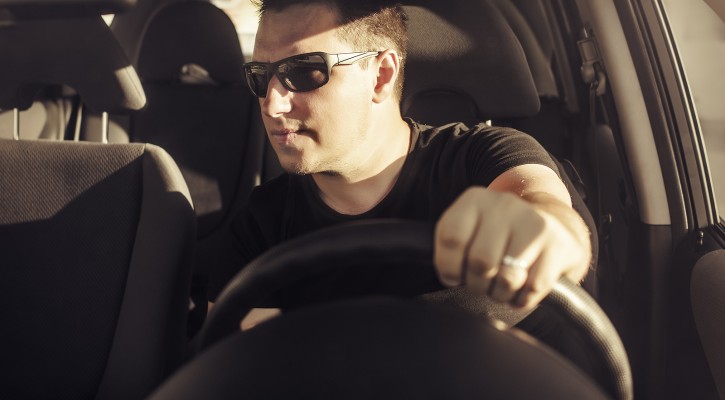
Eye Tracking Device Checks For Driver Attention And Fatigue
February 5, 2015
An eye tracking device that follows a driver’s eye movements could be in your driving future. The device, designed to monitor a driver’s eye movements and warn of inattention or driver fatigue can monitor a driver’s eyes, even through sunglasses.
Similar eye tracking devices have been talked about for quite a few years now but this one seems to have a track record. Developed by a company called Seeing Machines in Australia, their equipment has been used for some time and is currently installed in up to 4,000 delivery vehicles and heavy mining machines. Their use in mining equipment, it is claimed, has led to a 70 percent decrease in driver fatigue and distraction.
For cars, the company has developed a small eye tracking detector designed to fit easily into a car’s dashboard. It’s designed to work in conjunction with advanced driver assistance systems such as automatic braking and lane departure systems. If the system detects that a driver isn’t paying attention to the road or is fatigued, it can give an audible warning or vibrate the seat to bring the driver’s attention back to the road.
The company also sees the systems being used in aircraft cockpits and simulators, and working environments where strict attention to computer and machinery consoles is necessary.
They list Ford, General Motors, and Toyota as partners so it looks as if the auto industry is actively pursuing this technology for future applications in automobiles.
Read more: Eye-Tracking Car Tech Will Help Drivers Remain Focused
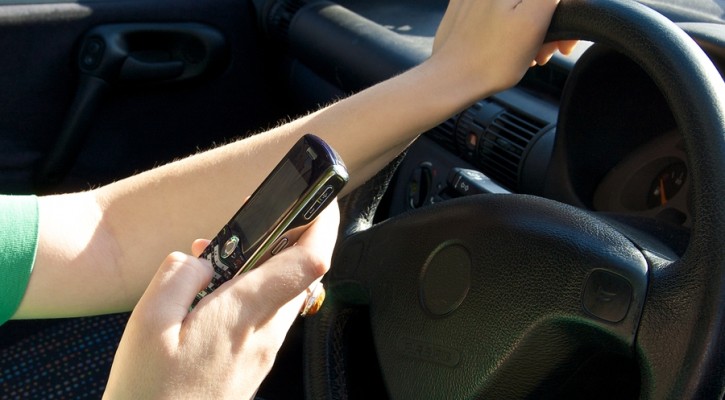
Proposed Bills To Ban Texting, Teen Cellphone Use in Florida
January 27, 2015
Two proposed bills by Florida lawmakers aim to further limit texting and cellphone use by Florida drivers. One bill seeks to make texting behind the wheel a primary offense. The other bill would prohibit the use of cell phones by drivers under the age of 18.
Texting Bill
One of the proposed bills sponsored by Rep. Ray Pilon, R-Sarasota and Rep. Richard Stark, D-Weston, would change Florida’s current anti-texting law from a secondary offense to a primary offense and would add enhanced penalties for those drivers caught texting in school zones or school crossing zones.
Florida’s current anti-texting bill is a “secondary offense” meaning that a law enforcement officer can only issue a ticket if he or she observes a driver texting while, at the same time, committing a “primary offense” such as speeding or running a red light. As a result, very few tickets have been issued for texting since the law went into effect.
Teen Cell Phone Ban
Another of the proposed bills sponsored by Sen. Anitere Flores, R-Miami, would prohibit the use of any type of “mobile telecommunications device” by drivers under the age of 18. Violation of this law would be considered a nonmoving offense.
Graduated Driving License Laws (GDL), are laws enacted in most states to gradually introduce teens to the driving environment. These laws are designed to give give teens more driving experience without distractions by limiting the number of passengers they can carry and by prohibiting the use of cell phones etc. Currently, 31 states prohibit use of cell phones by teen drivers. Fifteen more states place some sort of limitation on cell phone use by teens. Currently there are no limits on cell phone use by Florida drivers of any age.
Last week, the organization Advocates for Highway Safety, released a state-by-state report card based on state driving safety laws. Florida received a failing grade due to the lack of laws such as those proposed above. Even if these proposed bills were passed, Florida would still have less than half of the laws recommended by the Advocates and their passage would only move Florida from the “red zone” (the State falls dangerously behind in adoption of key safety laws) into the “yellow zone” (the State is advancing but has numerous gaps in its highway safety laws).
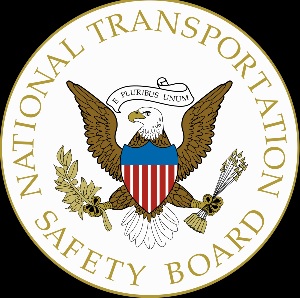
Distracted Driving Top Priority For NTSB
January 21, 2015
The National Transportation Safety Board ( NTSB ) has come out with its list of top safety priorities and, given the nature of the agency’s work, the top pick may be a bit surprising but, for safety experts, it shouldn’t be a surprise at all.
The NTSB is the federal agency known by most Americans as the agency that investigates aircraft crashes and, most often without any living witnesses, are tasked with finding the cause of the crash. However, the NTSB’s mission isn’t limited to aircraft incidents. The NTSB’s mission is to ensure the safety of any type of transportation including; aircraft, ships, trains, and motor vehicles.
It’s the motor vehicle side side of the NTSB’s work that that is drawing the most attention in this year’s list of top priorities. The top item among their list of safety priorities for 2015 is distracted driving.
According to the website Distraction.gov:
- 3,328 people were killed in distraction-affected crashes in 2012.
- An estimated 421,000 people were injured in motor vehicle crashes involving a distracted driver, this was a nine percent increase from the estimated 387,000 people injured in 2011.
- At any given daylight moment across America, approximately 660,000 drivers are using cell phones or manipulating electronic devices while driving, a number that has held steady since 2010.
- Five seconds is the average time your eyes are off the road while texting. When traveling at 55 mph, that’s enough time to cover the length of a football field blindfolded.
To compare; worldwide, there were 459 fatalities as a result of aircraft related incidents in 2013 according to the Geneva-based Bureau of Aircraft Accidents Archives. In 2013 the US had a total of 224 aircraft related fatalities including those aboard the aircraft and people on the ground.
If the US had experienced an aircraft related fatality rate equal to the number of distracted driving deaths, people would stop flying. It’s no wonder then that the NTSB needs to place its top priority on the problem of distracted driving.
Read more: NTSB 2015 MOST WANTED LIST OF TRANSPORTATION SAFETY IMPROVEMENTS
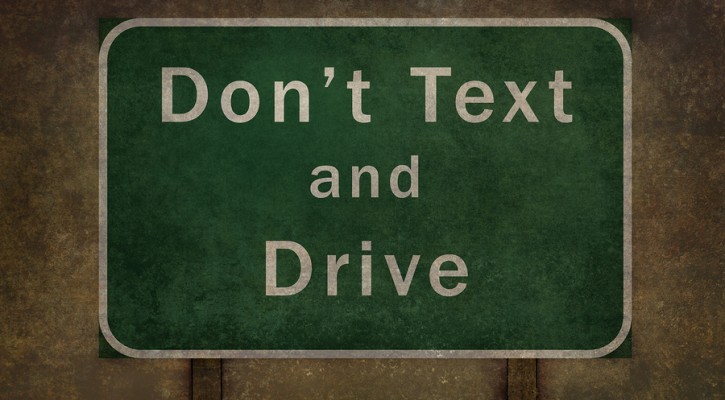
New York Enacts Stricter Anti Texting Law
November 5, 2014
A New York anti texting law that went into effect on the first of November carries some of the stiffest penalties in the nation, including license suspensions.
For young drivers subject to New York’s Graduated Driver License (GDL) laws who are caught texting while driving the penalties include:
- A mandatory 120-day driver license or permit suspension.
- For a second texting while driving conviction within six months, the license or permit will be revoked for at least one year.
For all drivers guilty of texting or using a cell phone while driving, the fines have increased to:
- $200 for a first conviction.
- $250 for a second conviction within 18 months.
- $450 for a third or subsequent conviction within 18 months.
In addition to the fines and suspensions, a conviction of using a cell phone or texting will result in five violator points on the driving record and a surcharge of up to $93.
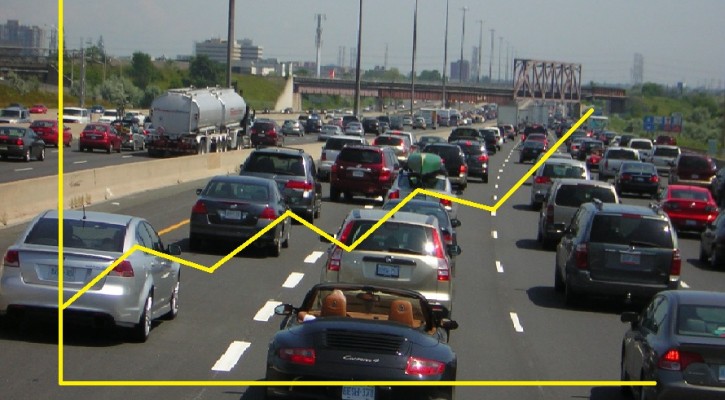
A Single Statistic: Anti-Texting Laws
October 9, 2014
Do Anti-texting laws work? A recent study shows that understanding a single statistic can change the public’s attitude on the need for safe driving laws. With that in mind, we are posting a series of single statistics on a variety of traffic safety issues. Many lawmakers are reluctant to enact driving safety laws because they feel – rightly or wrongly – that the public doesn’t support such reforms. If your state legislature is debating a traffic safety issue, it’s hoped that this single statistic will provide the public with the knowledge needed to make informed decisions that they can then share with their representatives.
The Issue: Anti-texting laws
- According to the Center for Disease Control, 31% of U.S. drivers ages 18-64 reported that they had read or sent text messages or email messages while driving at least once within the 30 days before they were surveyed.
- In 2011, 3,331 people were killed in crashes involving a distracted driver, compared to 3,267 in 2010.
- According to Distraction.gov, 10% of all drivers under the age of 20 involved in fatal crashes were reported as distracted at the time of the crash. This age group has the largest proportion of drivers who were distracted.
- A quarter of teens respond to a text message once or more every time they drive.
The Risks:
- When texting, a driver’s eyes are off the road for approximately five seconds. In five seconds, at 40 mph, a car will travel 330 feet. That’s equivalent to driving more than the length of a football field while blindfolded.
- Engaging in visual-manual subtasks (such as reaching for a phone, dialing and texting) associated with the use of hand-held phones and other portable devices increased the risk of getting into a crash by three times.
Primary or Secondary Anti-texting laws:
- Some states have passed “primary” laws banning texting by all or a portion of their drivers. A primary anti-texting law allows law enforcement to stop and ticket a driver just for texting while driving.
- Other states have passed “secondary” anti-texting laws. With a secondary law, law enforcement can only issue an anti-texting ticket to a driver if they witness a driver engaged in another primary driving offense such as speeding or running a red light while texting.
To see a list of states with primary or secondary cell phone and anti-texting laws, visit: Cellphones and texting
The Single Statistic:
According to a study by the University of Alabama at Birmingham School of Public Health:
- Primary anti-texting laws were associated with a three percent reduction in traffic deaths among all age groups.
- Primary texting laws that only target young drivers were associated with an 11 percent reduction of fatalities among the 15 to 21 year age group.
- States with secondarily enforced or no restrictions did not see any significant reductions in traffic fatalities.
Find your representative:
If you wish to share your thoughts on this issue with your state representatives, you can find their contact information by visiting: Find Your State Legislator – Open States
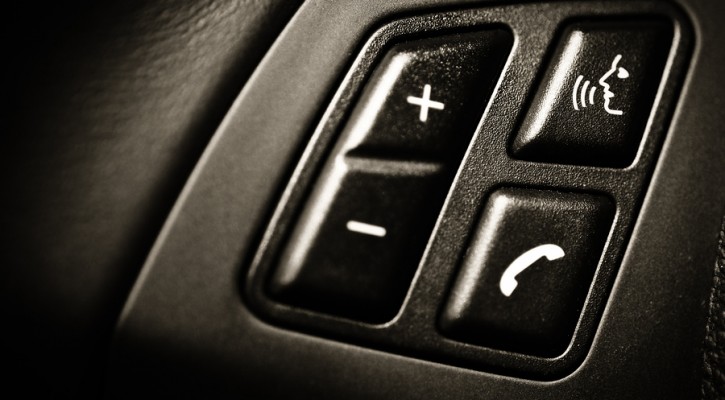
Are Technology Companies Trying To Kill Us?
October 7, 2014
To stay competitive, computer technology companies are always in a rush to come out with the latest and greatest new gizmo that people didn’t even know they wanted or needed. When it comes to motor vehicles, some of the new technology can help to make driving safer but most of the new technology will, in all probability, add to the dangers on the road. Let’s look at some of the latest innovations and how they could impact driving safety.
Wireless Connectivity
We’ve already addressed the push by the federal government to develop wireless connectivity in motor vehicles to enable cars to “talk” to each other. It’s hoped that this technology (known as Vehicle-to-Vehicle communication, or V2V) will warn a driver if another car is on a collision path. It could save a lot of lives but that technology is quite a few years away. However, automakers and mobile phone companies are rushing to add wireless technology to cars now; not to keep track of other vehicles other vehicles but to allow vehicle occupants access to the web at all times. The argument could be made that they aren’t advocating that drivers use computers but, human nature being what it is, many will be tempted to use their computers while driving.
Google Glass
With Google Glass, a driver won’t need a laptop. He or she can have access to a computer screen at all times. The inventors of this device say the underlying principle isn’t meant to distract but rather to connect people more to the world around them. Regardless of their intentions, reading emails or viewing stock reports while driving is a major distraction. Google is currently fighting efforts by some states to ban the use of Google Glass while driving.
Apple Watch and Android Wear “wristwatches”
Both Apple and Google are competing to put full computer technology into a wristwatch sized device. Both advertise the ability of their watches to allow the user to receive texts and emails. Now a driver can try to read his or her emails on a teeny tiny screen. A driving safety organization in Great Britain has already published a warning about the dangers of Apple Watch.
Bluetooth
Several automakers have incorporated Bluetooth technology into their cars enabling the driver to make hands free calls by syncing the driver’s phone to the car radio,. While at first, this may seem like a better option but a recent joint study by AAA and the University of Utah shows that the opposite is true. The results of their research show that using a hands free phone can be more distracting than just picking up the phone itself.
The best advice remains to put down the phone/ glass/watch and just concentrate on driving.
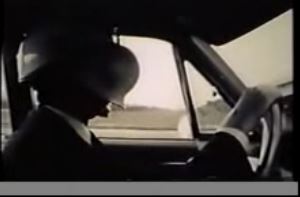
Blinding A Driver To Study Driver Distractions
August 18, 2014
By deliberately blinding himself on and off to study driver distractions, a researcher in 1963 took research to a new level while driving on a Boston highway. This mid-20th century experiment seems to anticipate one of the 21st century’s most dangerous driving issues. This is basically the same thing experienced by a driver while texting. Continue Reading
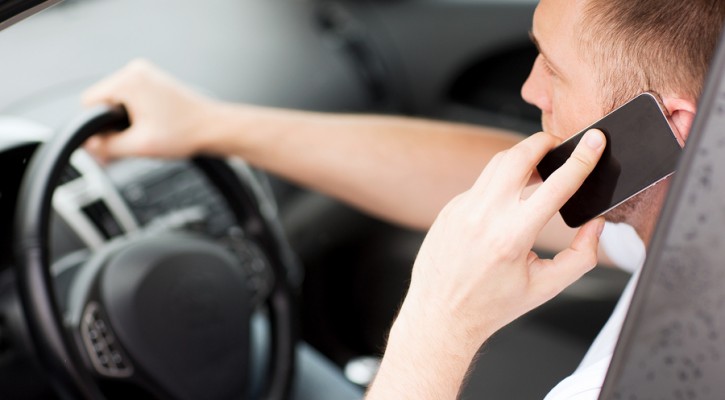
Austin TX Proposes Hand-held Cellphone Ban
August 8, 2014
Safety officials are proposing a ban on hand-held cellphone use while driving in the City of Austin Texas. If passed by the city council, the proposal would make it illegal to talk, text or use a cellphone behind the wheel of a vehicle. Drivers could still use their cellphone to call 911.
What these officials don’t seem to realize is that it isn’t the act of holding a cell phone in your hand while driving that’s dangerous, it’s the act of carrying on a cellphone conversation while driving. Several studies have shown that whether the phone is hand-held or hands-free, the dangers are still the same because the problem stems from what the brain is doing and not the hands. Continue Reading
